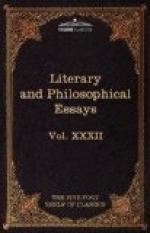Good works now exist which facilitate the task of him who undertakes the study of these interesting literatures. Wales, above all, is distinguished by scientific and literary activity, not always accompanied, it is true, by a very rigorous critical spirit, but deserving the highest praise. There, researches which would bring honour to the most active centres of learning in Europe are the work of enthusiastic amateurs. A peasant called Owen Jones published in 1801-7, under the name of the Myvyrian Archaiology of Wales, the precious collection which is to this day the arsenal of Cymric antiquities. A number of erudite and zealous workers, Aneurin Owen, Thomas Price of Crickhowell, William Rees, and John Jones, following in the footsteps of the Myvyrian peasant, set themselves to finish his work, and to profit from the treasures which he had collected. A woman of distinction, Lady Charlotte Guest, charged herself with the task of acquainting Europe with the collection of the Mabinogion, [Footnote: The Mabinogion, from the Llyfr Coch O Hergest and other ancient Welsh Manuscripts, with an English Translation and Notes. By Lady Charlotte Guest. London and Llandovery, 1837-49. The word Mabinogi (in the plural Mabinogion) designates a form of romantic narrative peculiar to Wales. The origin and primitive meaning of this word are very uncertain, and Lady Guest’s right to apply it to the whole of the narratives which she has published is open to doubt.] the pearl of Gaelic literature, the completest expression of the Cymric genius. This magnificent work, executed in twelve years with the luxury that the wealthy English amateur knows how to use in his publications, will one day attest how full of life the consciousness of the Celtic races remained in the present century. Only indeed the sincerest patriotism could inspire a woman to undertake and achieve so vast a literary monument. Scotland and Ireland have in like measure been enriched by a host of studies of their ancient history. Lastly, our own Brittany, though all too rarely studied with the philological and critical rigour now exacted in works of erudition, has furnished Celtic antiquities with her share of worthy research. Does it not suffice to cite M. de la Villemarque, whose name will be henceforth associated among us with these studies, and whose services are so incontestable, that criticism need have no fear of depreciating him in the eyes of a public which has accepted him with so much warmth and sympathy?




